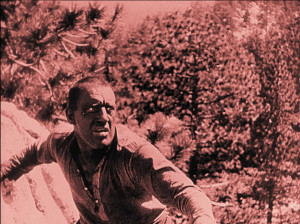
This article was written by Sarah Florini of Old Dominion University in Norfolk, Virginia. Florini is an Assistant Professor of Communication and Theatre Arts at Old Dominion.
Media studies and cultural/critical studies scholars have long pointed to the importance representation in shaping our social and political life. Media do not simply represent what is, but also construct and maintain our social realities. In the century since the debut of Birth of a Nation, U.S. media have produced a steady stream of degrading racist caricatures of Black Americans. From the sexual predation of Gus in Birth of a Nation to the buffoonery of Amos and Andy straight through to the present day, media often cast Black Americans as violent, lazy, hyper-sexual, and of low intelligence. These images have served to justify and perpetuate racist beliefs, helping to provide the rationale necessary to maintain racial inequalities. Yet, in the face of an exclusionary, and often outright hostile, white-dominated mainstream media, Black Americans have always created alternative media spaces to represent themselves and fight back against the imagery and discourses that dehumanize them.
The release of Birth of a Nation was met not only with outrage for its racist imagery, but also with cinematic retorts such a Birth of a Race (partially funded by Hampton Road’s own Hampton University) and Oscar Micheaux’s Within our Gates. Far from being an exception, these projects are representative of the long history of Black independent media production. Whether through film, newspapers like the Chicago Defender (now in its 110th year), community radio stations, or Hip hop, Black Americans have always carved out spaces for themselves. The 100th anniversary of Birth of a Nation is an opportunity not only to reflect back on and celebrate this long tradition of resistance, but to also recognize the contemporary iterations of such anti-racist media-making – the many vibrant Black media spaces that can be found across digital and social media platforms.
In recent years, Black digital media content creators have flourished. The large predominantly Black network of Twitter users known as “Black Twitter” has repeatedly leveraged their dense social media connections to circulate information, organize political protest, and make their voices heard. Blogs like Racialicious and Crunk Feminist Collective provide commentary from perspectives that are routinely silenced elsewhere. A robust and growing group of Black podcasters, like This Week in Blackness and The Black Guy Who Tips, produce talk-radio style content that offers Black perspectives on politics and popular culture. And a new generation of activists have successfully used digital media to organize and mobilize around issues of racial profiling and police brutality. When unrest erupted on the streets of Ferguson, MO in August of 2014, activists and organizers used Vine, Instragram, Twitter and livestreaming technologies to bypass mainstream media and provide their own accounts of events.
Digital media have created unprecedented opportunities for self-expression and engagement. While access is still limited for far too many, digital media have lowered the barrier for entry into cultural conversations and created new possibilities for visibility. Faster than print, much less costly than making a feature film, and not geographically limited by the boundaries of reception like terrestrial radio, digital media allow the distribution of content instantaneously and over vast geographical distances. Mobile technologies allow that access to happen almost anywhere. So audiences can essentially carry their alternative media sources with them in their pockets. One hundred years after Birth of a Nation, Black Americans are still “answering” racist representations with self-definition and self-representation. The mediums have changed, but the resistance remains.
Check out these related video clips from Birth of a Nation and Amos and Andy:
Birth of a Nation Gus chase scene: https://www.youtube.com/watch?v=LSBLcKa85rk
Amos and Andy episode: https://www.youtube.com/watch?v=w1Bsk9GZga8